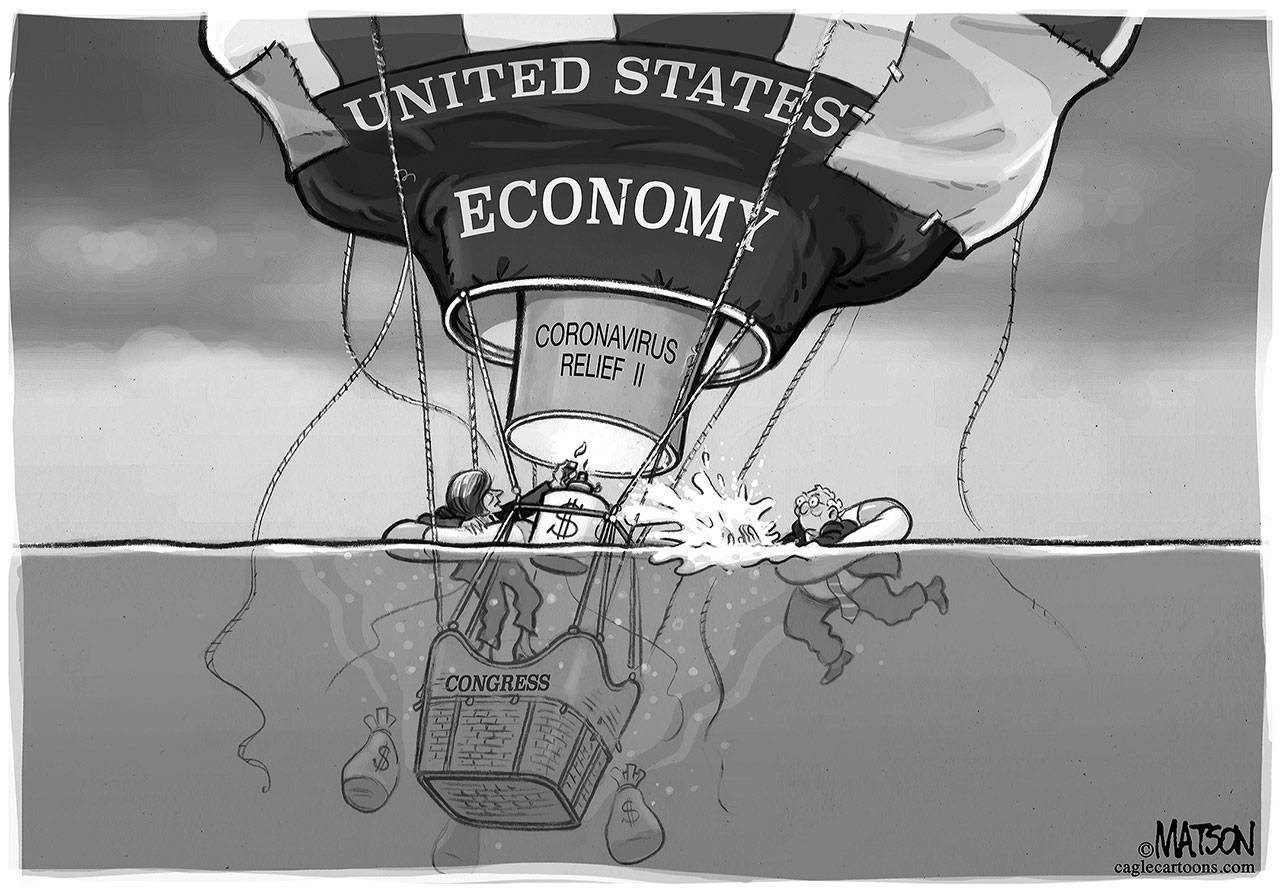When this presidential campaign began, the economy was supposed to be President Donald Trump’s strongest selling point —even after the coronavirus threw the nation into recession.
“I built it once, and I’ll build it again,” Trump said, claiming credit for the decade-long expansion that began years before he came to the White House.
Even now, while the president is running behind Joe Biden, most polls suggest that a narrow majority still considers Trump the candidate most likely to help the economy succeed. While the death of Justice Ruth Bader Ginsburg has added a wild card to the presidential contest, the economy is now at the forefront.
And Biden has decided to make a fight of it, if belatedly.
In recent weeks, the Democratic challenger —who initially cast the campaign as a battle over “the soul of a nation,” then focused on Trump’s chaotic response to the COVID-19 pandemic —has increasingly taken aim at the president’s advantage on economic issues.
In recent speeches, Biden has alleged that Trump failed to keep one of his key promises, the revival of manufacturing. He’s right; U.S. manufacturing industries were in a recession before the pandemic, partly because of Trump’s trade wars.
Biden also is casting himself as a child of the working class, and Trump as the privileged heir to a real estate fortune.
“We’re used to guys who look down their nose at us … and think that we’re suckers,” he said at a CNN town hall near his boyhood home of Scranton, Pa. “I really do view this campaign as a campaign between Scranton and Park Avenue … . All he thinks about is the stock market.”
It’s an argument aimed squarely at working-class white voters who backed Barack Obama in 2008 but switched sides in 2016 to vote for Trump, especially in key industrial states like Pennsylvania, Wisconsin and Michigan.
Biden has been emphasizing two elements of his economic plan: an increase in the federal minimum wage to $15 an hour from $7.25, and measures to promote manufacturing. Among them: Increase federal purchases of U.S.-made goods, enforce a strict “Buy American” policy, impose tax penalties on firms that move jobs overseas, and reward them for bringing jobs home.
But those planks are only a small part of Biden’s sprawling economic platform —47 proposals, by one count, under the tongue-twisting title of “Building Back Better.” Other ideas include plans to rebuild roads, bridges, electricity grids and other infrastructure; expand sick pay and parental leave; increase the child care tax credit for most families; provide universal pre-K education; and boost elder care subsidies.
He also promises ambitious climate change and clean-energy proposals. “When I hear global warming, I think jobs,” Biden said last week.
Progressive Democrats and others who’ve urged Biden to inject more economic populism into his pitch are applauding. “He’s moving in the right direction,” longtime Democratic strategist Stanley Greenberg, a past critic, told me. “He’s offering a more powerful contrast with Trump.”
Biden’s spending proposals would cost an estimated $5.4 trillion over the next 10 years and raise federal spending to 24% of gross domestic product, according to researchers at the University of Pennsylvania’s Wharton School. That would be the highest sustained federal spending in half a century, although lower than the temporary economic responses to the 2008 financial crash and the 2020 pandemic.
He would pay for most of that spending with higher taxes on corporations and individuals earning $400,000 or more. He’s casting those levies in class terms as well.
“I’m not looking to punish anybody, but damn it, it’s about time the super wealthy and corporate America start paying their fair share,” he said in Duluth, Minn., on Friday.
It adds up to a plan that’s considerably bigger in both spending and tax increases than anything President Obama pursued in the wake of the 2008 financial crash. But then, the impact of the current crises in the economy and public health is greater than what Obama faced.
With his far-reaching responses, Biden not only offers a contrast with Trump —the Republican Party failed to offer a platform for the first time in its history this year —but has also united his own party, from deficit-conscious moderates like himself to free-spending progressives like former rival Bernie Sanders.
“Joe Biden is absolutely right,” the Vermont senator wrote on Twitter on Friday.
“The Democratic Party has moved to the left big time —not because of ideological arguments, but based on the facts of the case,” Jared Bernstein, a longtime Biden advisor, said. “We have big plans because we have big problems.”
Whether a President Biden could enact such sweeping plans depends on Democrats also taking over the Senate. To take an obvious example, tax increases on high-income households are anathema to most Republicans. And without additional revenue, Biden won’t have the money to promote clean energy or subsidize child care.
But the argument over the scale of Biden’s ambition is over. There’s nothing small about his proposals, and he’s now made them central to his campaign.
Voters have a stark choice: an interventionist government taxing the wealthy to help lower-income families get through hard times, or a plutocrat-friendly administration relying on lower taxes and deregulation to let the economy heal itself.
This election isn’t only about the soul of the nation anymore. It’s about its paychecks and pocketbook, too.
(c)2020 Los Angeles Times
Visit the Los Angeles Times at www.latimes.com
Distributed by Tribune Content Agency, LLC.



